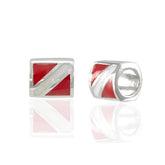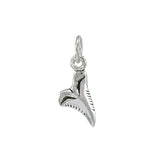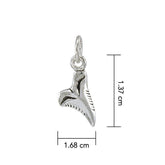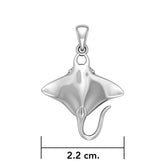The Strategic Role of Dive Silver Jewelry in Retail and Marketing
Introduction: Understanding Dive Silver Jewelry and Its Unique Significance
Dive silver jewelry, as presented by Captain Peter Croskey of Dive Silver Jewelry, is not merely another retail product but represents a strategic investment and a powerful marketing tool within the dive industry and beyond. Established in 1999, Dive Silver Jewelry specializes in fine sterling silver and gold jewelry themed around diving and marine life, catering to dive shops, seaside retailers, and resorts worldwide.
This chapter explores the core concepts surrounding dive silver jewelry, clarifying what it is and, importantly, what it is not. Dive silver is more than just a product line; it embodies emotional connection, profit generation, store enhancement, and brand marketing. Key vocabulary includes investment, precious metals, marketing tool, retail profit, and consumer engagement. Understanding these terms is essential to grasp the profound impact dive silver jewelry can have on a business’s bottom line and community presence.
Section 1: What Dive Silver Jewelry Is Not – Debunking Common Misconceptions
Many dive shop owners and retailers misunderstand dive silver jewelry, perceiving it as just another retail item or a “cheap addition” to their store inventory. Captain Croskey clarifies five critical misconceptions:
- Dive silver is not simply another product to stock without strategic consideration.
- It is not a bulky or space-consuming item like wetsuits or dive gear that requires large retail space.
- Dive silver is not a basic, everyday commodity item.
- It is not a cheap or insignificant accessory; it holds intrinsic value.
- Finally, dive silver is not a necessity for the act of diving itself but an investment tied to the lifestyle and emotional experience of diving.
This reframing emphasizes that dive silver jewelry transcends mere retail merchandise, aligning more closely with an investment in brand identity and customer loyalty.
- Dive silver jewelry is a precious metal product—typically sterling silver or gold—crafted to evoke the diving experience.
- Its value extends beyond price tags, connecting emotionally with customers who associate the jewelry with memorable dive experiences.
Section 2: The Five Key Attributes of Dive Silver Jewelry
Captain Croskey identifies five essential characteristics that define dive silver jewelry and differentiate it from other retail products:
-
Emotional Connection and Experience Enhancement
Dive centers offer customers an emotional and memorable experience—an escape from mundane office life filled with excitement, adventure, and connection to the sea. Dive silver jewelry acts as a tangible reminder of these experiences, allowing customers to carry and share the spirit of diving beyond the dive site.
- Jewelry serves as a symbolic artifact that evokes memories of diving adventures.
- Customers often wear the jewelry in professional settings where dive gear would be inappropriate, subtly promoting the dive lifestyle.
-
Compact and High-Value Display
A small display case can hold a significant volume of jewelry, with retail values reaching up to $3,000 to $5,000 in a compact space, making it a highly efficient use of retail real estate.
- Jewelry pieces like toe rings have been particularly successful, as demonstrated by a case in Thailand where Dive Silver Jewelry supported the Thailand Manta Project.
- The compact display allows retailers to maximize profit per square foot while offering a diverse product range.
-
Profit Generation and Marketing Synergy
Dive silver jewelry is a profit center for retailers, with substantial margins on sales. For example, a typical piece sold at $39.95 can yield a profit of $20 to $25. Selling $100 worth of jewelry daily could generate around $3,000 in monthly revenue, translating into approximately $1,000 clear profit after expenses.
- Jewelry sales provide steady cash flow and are not difficult to sell.
- Beyond direct profit, jewelry acts as a walking advertisement; customers wearing dive-themed jewelry spark conversations, attracting new customers through word-of-mouth.
-
Enhancement of Store Quality and Customer Experience
Offering dive silver jewelry elevates the perceived quality of a dive shop, differentiating it from competitors and creating a more refined shopping experience.
- Jewelry appeals to both divers and their families, encouraging gift purchases for occasions such as birthdays, holidays, and Valentine’s Day.
- This broadens the customer base and increases foot traffic beyond typical dive gear buyers.
-
Accessible Investment for Retailers and Customers
Despite involving precious metals, dive silver jewelry is affordable both for retailers and consumers.
- Average wholesale costs range between $10 and $20, with retail prices from $40 to $80.
- Unlike high-cost dive computers or equipment, jewelry is a low-risk investment with high returns.
- Retailers benefit from buy-back or return policies, reducing risk and ensuring a win-win situation.
- This accessibility encourages retailers to adopt dive silver jewelry confidently as a strategic asset.
Section 3: Dive Silver Jewelry as a Marketing Tool
One of the most compelling arguments Captain Croskey presents is the marketing power of dive silver jewelry. It functions as a mobile advertisement for dive centers and the diving lifestyle:
- Customers wearing dive-themed jewelry initiate conversations in social and professional environments.
- Jewelry pieces often feature nautical motifs—such as manta rays, dolphins, seahorses, and dive flags—connecting wearers to specific dive destinations like the Florida Keys, Caribbean, or Thailand.
- These conversations can lead to referrals and increased awareness of dive shops, effectively expanding the customer base without additional marketing expenditure.
Dive silver jewelry can also be integrated with referral codes and marketing tools to track and amplify its impact, creating a multi-layered revenue stream beyond simple product sales.
- The jewelry’s role extends to brand building, helping dive centers establish themselves as lifestyle hubs rather than mere equipment vendors.
Section 4: Real-World Case Study – The Thailand Manta Project
An illuminating example shared by Captain Croskey involves the success of dive silver jewelry in Thailand:
- Dive Silver Jewelry collaborated with the Thailand Manta Project, introducing toe rings linked to the project’s marine conservation efforts.
- Despite initial skepticism, these toe rings sold out rapidly, demonstrating strong consumer demand when jewelry carries a meaningful story.
- This case underscores the importance of regional and thematic relevance in product selection.
- Such partnerships can also enhance the retailer’s reputation, aligning them with conservation and community efforts.
This case study exemplifies how dive silver jewelry can transcend commercial goals, supporting broader industry values such as environmental stewardship.
Section 5: Overcoming Retailer Hesitations and Expanding Opportunities
Captain Croskey addresses common retailer concerns regarding dive silver jewelry, particularly regarding cost and inventory risk:
- He reassures that dive silver is not prohibitively expensive and that the investment is minimal compared to other dive equipment.
- Return policies and marketing support offered by Dive Silver Jewelry reduce the risk associated with stocking new product lines.
- Jewelry sales can boost revenue during typically slower retail periods, such as holidays, by attracting gift buyers.
- There is potential for expanding product lines beyond nautical themes in the future, though the focus remains on dive-related jewelry for now.
These points provide practical guidance for retailers hesitant to diversify their product offerings.
Conclusion: The Multifaceted Benefits and Strategic Importance of Dive Silver Jewelry
In summary, dive silver jewelry represents a unique convergence of emotional resonance, profitability, marketing power, and brand enhancement within the dive retail industry. Captain Peter Croskey’s insights reveal that dive silver is far more than a decorative accessory; it is an investment that yields financial returns, elevates store quality, and fosters customer engagement.
The key takeaways include:
- Dive silver jewelry is a compact, high-value product that maximizes retail space and profits.
- It serves as a marketing tool by sparking conversations and increasing brand visibility beyond the dive shop.
- Jewelry appeals to a broad demographic, including non-divers, expanding the customer base during gift-giving seasons.
- The investment is affordable and low-risk, supported by flexible return policies and marketing assistance.
- Real-world applications, such as the Thailand Manta Project collaboration, illustrate its potential to support both business and conservation efforts.
Ultimately, integrating dive silver jewelry into a dive center’s retail strategy can transform the shop’s role from a simple equipment provider to a lifestyle brand ambassador, creating sustained business growth and community connection.
Advanced Bullet-Point Summary
-
Dive Silver Jewelry Defined:
- Founded in 1999 by Captain Peter Croskey.
- Sterling silver and gold jewelry themed around diving and marine life.
- Distributed worldwide through dive shops, resorts, and seaside retailers.
-
What Dive Silver Jewelry Is Not:
- Not a bulky or everyday product.
- Not a cheap or trivial item.
- Not essential for diving but an investment in lifestyle branding.
-
Five Key Attributes:
- Creates emotional connection—extends dive experience beyond water.
- Compact displays maximize retail value ($3,000–$5,000 in small space).
- Profitable with 50–60% margins; example: $39.95 sale yields ~$20 profit.
- Enhances store quality and attracts diverse customers.
- Affordable investment with manageable risk.
-
Marketing Benefits:
- Jewelry acts as mobile advertising.
- Sparks conversations about diving and dive centers.
- Supports brand building and customer referrals.
- Can be integrated with referral codes and marketing tools.
-
Case Study – Thailand Manta Project:
- Toe rings linked to conservation sold out quickly.
- Demonstrates importance of thematic relevance and storytelling.
-
Retailer Guidance:
- Jewelry costs between $10–$20 wholesale.
- Retail prices range $40–$80.
- Return policies minimize risk.
- Drives traffic during holidays and special occasions.
-
Conclusion:
- Dive silver jewelry is a strategic asset combining profit, marketing, and brand enhancement.
- Encourages retailers to view it as an investment rather than inventory.
- Bridges emotional dive experiences with real-world business growth.
This chapter provides a comprehensive understanding of dive silver jewelry’s role in retail and marketing, designed to help dive industry professionals leverage this unique product for maximum benefit.






